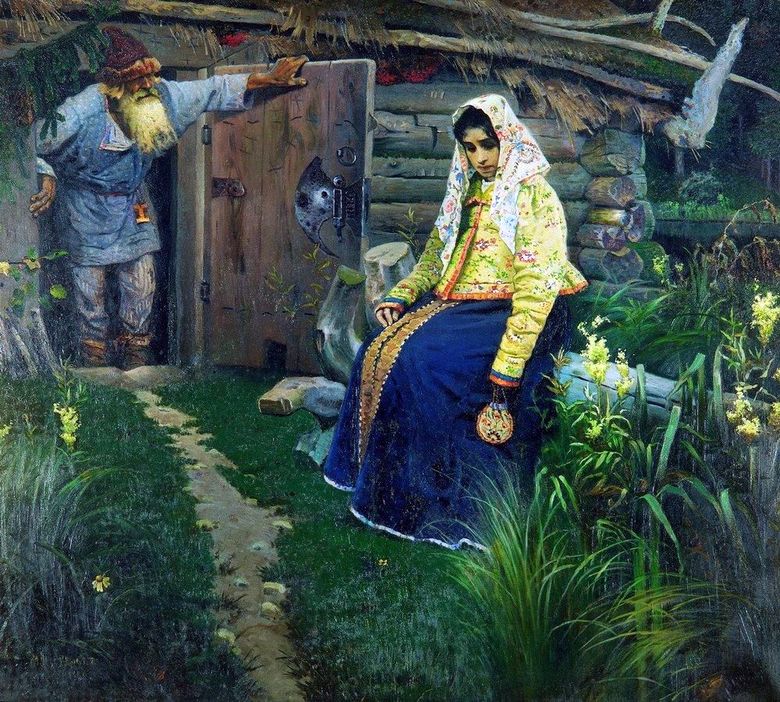
The picture of Mikhail Nesterov “For the bewitching potion” was written under the direct influence of the Wanderers’ postulates, namely under the influence of their reverent attitude to the domestic genre.
The first thing that makes you stop at this picture is the girl’s face. One can only admire and wonder how the artist managed to depict such deep emotions through such a not so large-scale figure: incredibly deep sadness due to unrequited love is reflected by eyes, hopelessness and despair show in sluggishly lowered hands, pursed lips are hard about the embarrassment that the heroine feels resorting to the last thread, the hope of a love potion.
Surprisingly, how beautiful the sad face of a girl! A young girl with a sad expression is a steady leitmotif in many of his paintings. Researchers suggest that sad female images are an indescribable pain of loss for Nesterov’s wife, who died very early in childbirth.
In the corner of the picture we will have another active character – an old man, a sorcerer, a medicine man, as indicated not only by his beard, a cone-shaped hat and a solitary dwelling, but also something like a talisman at the waist. His frowning eyebrows express understanding, and even sympathy – just by looking at the sad beauty, he knows about all her heartfelt torments.
The contrast to this, in general, the sad scene is the lush growth of the vegetation around the girl – such muffled, lovingly written green can be found on many master’s canvases. The so-called “Nesterovsky” landscape is always spiritualized with the lyrical characters of his paintings.
We do not know how this story will end – whether a girl will get a potion and find happiness, or leave without daring to raise her gaze on the old man. The painter only makes us empathize, and we, as if, ourselves become unwitting participants in the plot, and the sweet girl is confused not only in front of the old man, but also under our, albeit sympathetic, views.
 Derrière la potion d’amour – Mikhail Nesterov
Derrière la potion d’amour – Mikhail Nesterov Natasha on the garden bench by Mikhail Nesterov
Natasha on the garden bench by Mikhail Nesterov Two frets by Mikhail Nesterov
Two frets by Mikhail Nesterov Silence. Solovki. Chanterelle by Mikhail Nesterov
Silence. Solovki. Chanterelle by Mikhail Nesterov Old Testament Trinity by Mikhail Nesterov
Old Testament Trinity by Mikhail Nesterov Portrait of artists P. D. and A. D. Korinykh by Mikhail Nesterov
Portrait of artists P. D. and A. D. Korinykh by Mikhail Nesterov Autumn Landscape by Mikhail Nesterov
Autumn Landscape by Mikhail Nesterov Portrait of the academic physiologist I. P. Pavlov by Mikhail Nesterov
Portrait of the academic physiologist I. P. Pavlov by Mikhail Nesterov